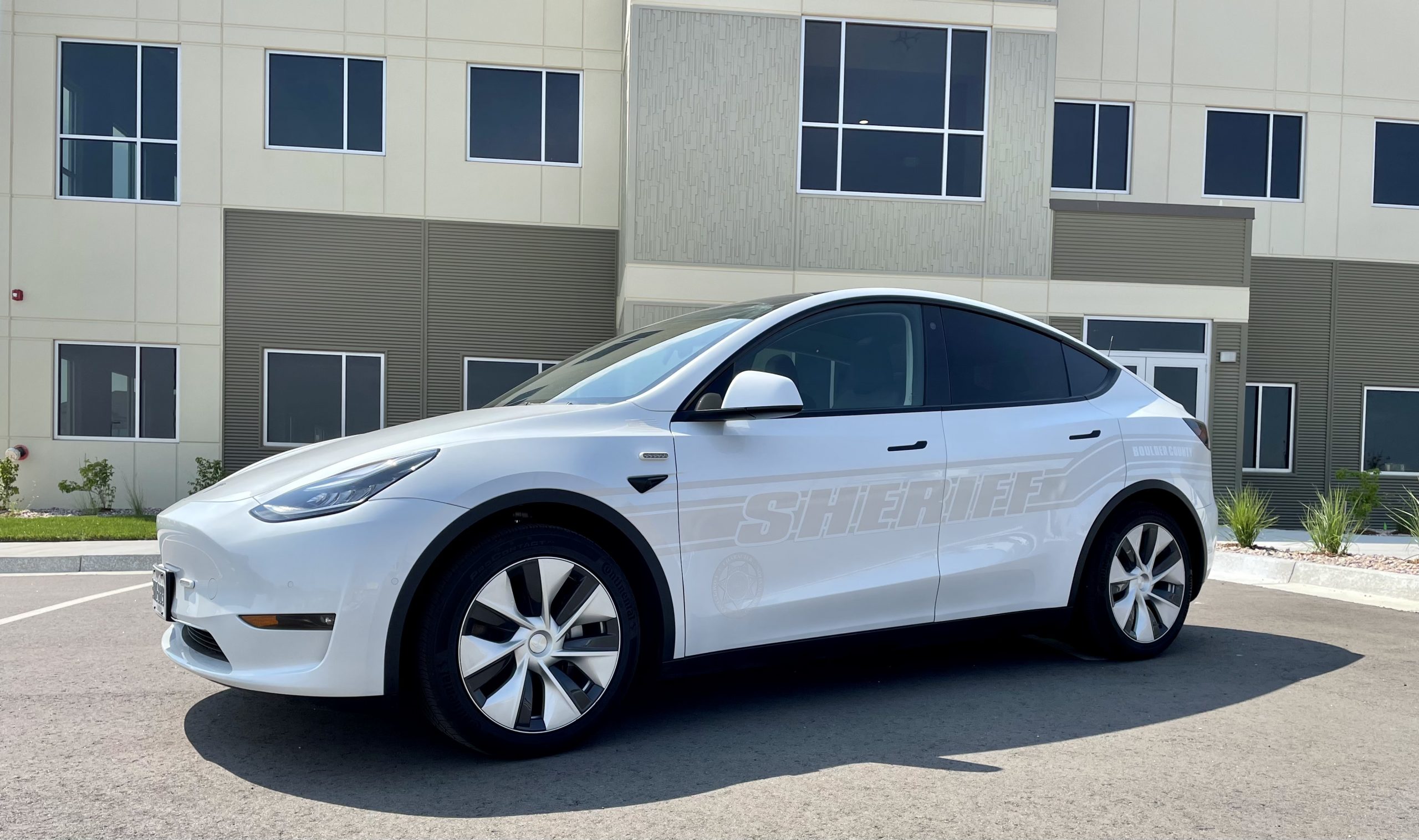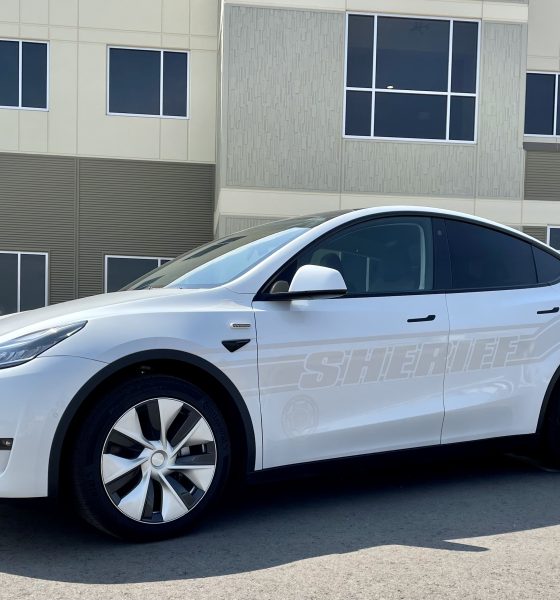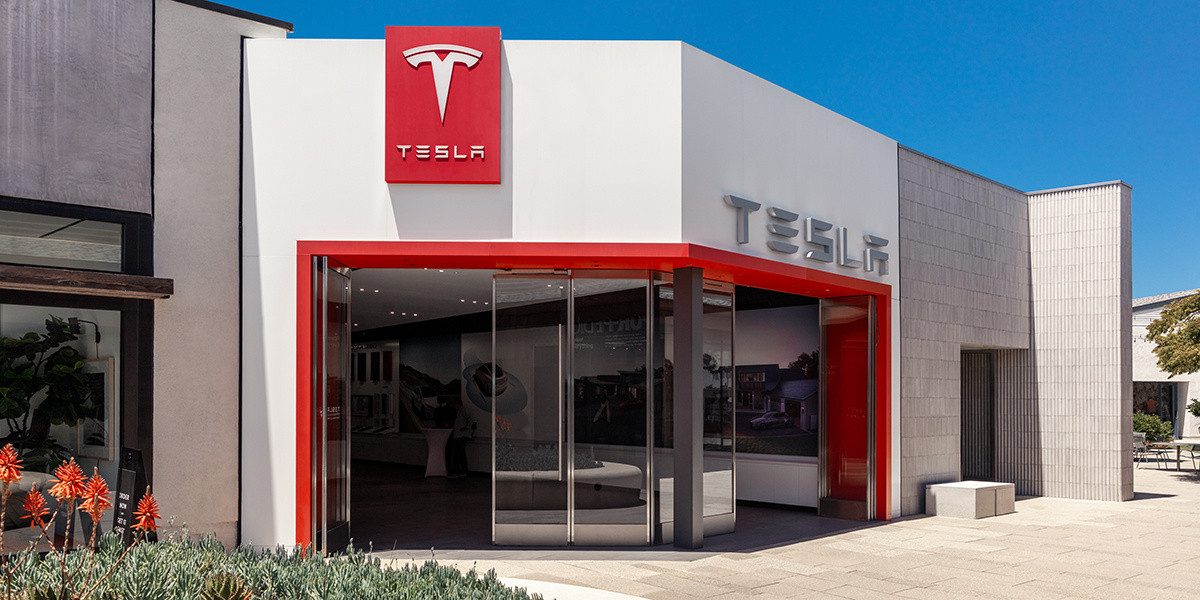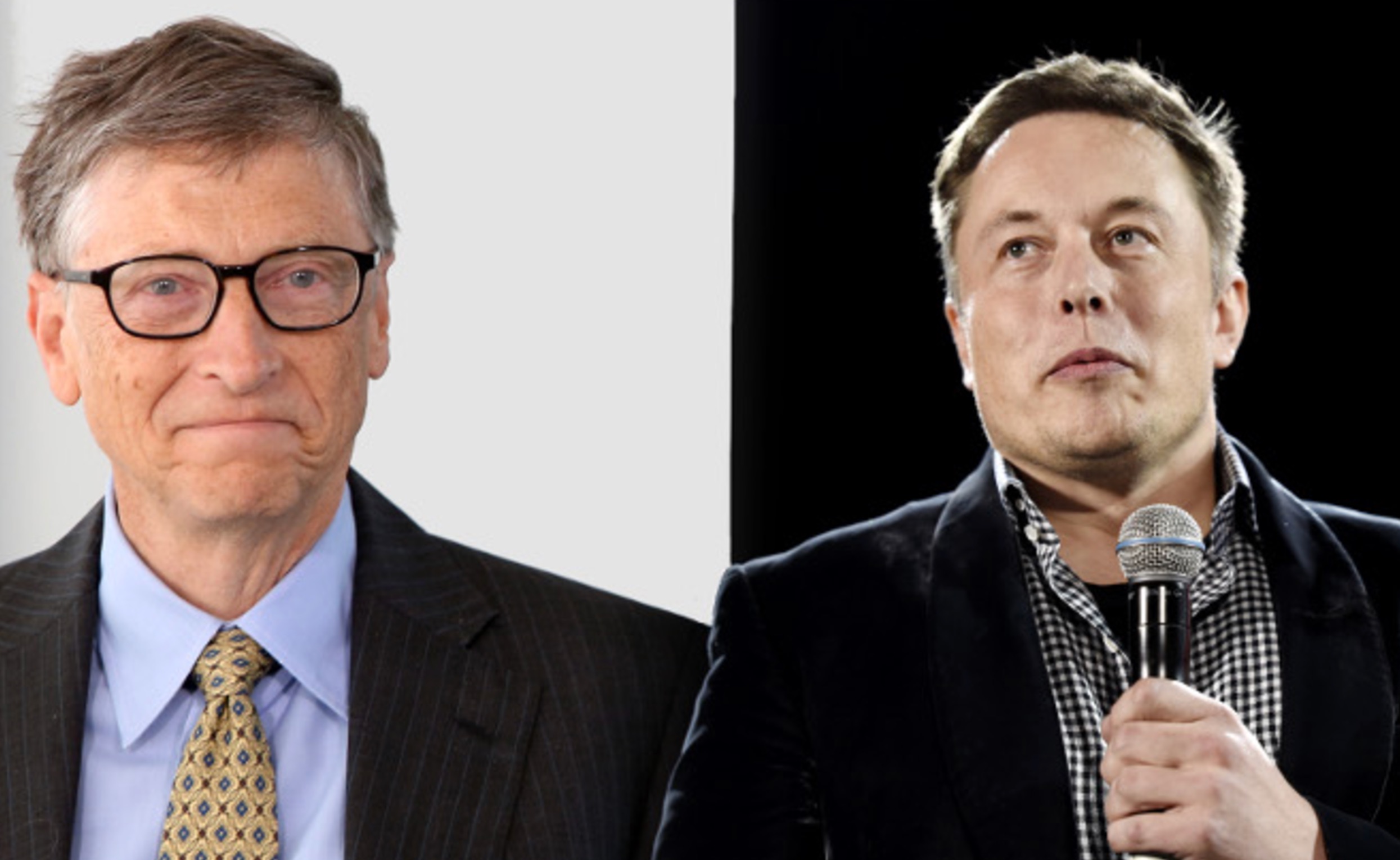

News
Tesla Police Cruiser fleet rejected by department despite numerous success stories
A potential fleet of Tesla Police Cruisers was rejected by Spokane, Washington’s Police Department after an evaluation of the all-electric Model Y crossover did not convince some members that the vehicle would be effective for law enforcement. Despite several stories of success from Police Departments across the country and even internationally, Spokane’s Police Department brought plenty of concerns to the table.
However, when Spokane officers got their hands on the Model Y, they were not convinced of what they saw.
“They’re not a suitable police car. They are too small. They are not designed for police work,” Maj. Michael McNab said in a Spokane City Council meeting in late February. The Spokane Department was set to receive one Model Y crossover in early 2021 after it set aside time for determining infrastructure concerns like charging and receiving enough funding for the project.
The synopsis of electric vehicles as police cruisers from the Department’s Major McNab seems to put the Spokane Police in a bit of an awkward situation. While the Department and local political leaders are interested in adding at least two electric vehicles to their fleet this year, Teslas seemed to fall short in their reviews of the vehicle. In total, the Spokane PD will buy 64 new vehicles this year, hoping to eventually transition to less combustion engine vehicles and more electric ones. However, another manufacturer will likely be producing the EV police cruisers.
It is not all bad, and there are plenty of options moving forward. Luckily, the EV sector is not confined to a few options like it was several years ago. In 2018, mass-market and affordable EVs were few and far between: the Chevrolet Bolt EV was the United States’ most-popular electric car. That is, until Tesla ramped Model 3 production that year, basically catalyzing the rest of the automotive industry to get moving on plans for electrified options.
Now in 2022, there are several vehicles on the market that offer sustainability and the necessities for a police cruiser. While the Model 3, Model Y, and Model S from Tesla have all made their ways into law enforcement agencies across the country, the Mustang Mach-E from Ford is also being considered by several departments, including one in Michigan and another in Europe.
Tesla-owning Officer convinces Sheriff’s Office a Model Y would be perfect fit
Spokane City Council President Breean Beggs told the Department that other options are available, but it is imperative the Department moves toward electric options as State and City laws require the transition “whenever feasible,” according to the Spokane Review (via Police1).
“If the Tesla isn’t the one you want, pick some you would like and try them out,” Beggs said during the City Council meeting. EVs are a focus of Beggs, who suggested other electric options, like Ford’s upcoming F-150 Lightning pickup. “Things continue to evolve. There’s better and better options,” Beggs said.
Officers are stating that they are not fully convinced of the availability and “readiness” of EVs, and are leaning more toward the Ford K8 Hybrid SUV. Fully electric options are not considered suitable by the officers, who believe the cars were geared with traditional passengers in mind. Employees were surveyed to determine their thoughts on the Model Y as a cruiser, which brought back plenty of concerns regarding space. With the needs of a Police Officer taking up some of the cargo space of the vehicle, it could be a tighter fit than other vehicles.
However, so many departments have credited switching to EVs as a catalyst for economic savings and on-job advantages. The Westport Police Department in Connecticut showed massive financial savings during its first years with a Model 3 police cruiser. The Department also credited the vehicle’s lack of engine noise and quick acceleration as perks when performing police duties.
Maj. McNab seems unconvinced of the advantages. “For this 64-vehicle purchase, there isn’t a suitable electric vehicle solution, and if we were to buy any one of these alternatives we would just be experimenting with electric cars on a grander scale than we are with the two Teslas,” McNab said. Beggs believes the Department should be asking “How” EVs could work, instead of simply dismissing the idea altogether. “That’s my frustration with the Department,” Beggs said.
I’d love to hear from you! If you have any comments, concerns, or questions, please email me at joey@teslarati.com. You can also reach me on Twitter @KlenderJoey, or if you have news tips, you can email us at tips@teslarati.com.

News
Tesla dispels reports of ‘sales suspension’ in California
“This was a “consumer protection” order about the use of the term “Autopilot” in a case where not one single customer came forward to say there’s a problem.
Sales in California will continue uninterrupted.”

Tesla has dispelled reports that it is facing a thirty-day sales suspension in California after the state’s Department of Motor Vehicles (DMV) issued a penalty to the company after a judge ruled it “misled consumers about its driver-assistance technology.”
On Tuesday, Bloomberg reported that the California DMV was planning to adopt the penalty but decided to put it on ice for ninety days, giving Tesla an opportunity to “come into compliance.”
Tesla enters interesting situation with Full Self-Driving in California
Tesla responded to the report on Tuesday evening, after it came out, stating that this was a “consumer protection” order that was brought up over its use of the term “Autopilot.”
The company said “not one single customer came forward to say there’s a problem,” yet a judge and the DMV determined it was, so they want to apply the penalty if Tesla doesn’t oblige.
However, Tesla said that its sales operations in California “will continue uninterrupted.”
It confirmed this in an X post on Tuesday night:
This was a “consumer protection” order about the use of the term “Autopilot” in a case where not one single customer came forward to say there’s a problem.
Sales in California will continue uninterrupted.
— Tesla North America (@tesla_na) December 17, 2025
The report and the decision by the DMV and Judge involved sparked outrage from the Tesla community, who stated that it should do its best to get out of California.
One X post said California “didn’t deserve” what Tesla had done for it in terms of employment, engineering, and innovation.
Tesla has used Autopilot and Full Self-Driving for years, but it did add the term “(Supervised)” to the end of the FSD suite earlier this year, potentially aiming to protect itself from instances like this one.
This is the first primary dispute over the terminology of Full Self-Driving, but it has undergone some scrutiny at the federal level, as some government officials have claimed the suite has “deceptive” naming. Previous Transportation Secretary Pete Buttigieg was vocally critical of the use of the name “Full Self-Driving,” as well as “Autopilot.”
News
New EV tax credit rule could impact many EV buyers
We confirmed with a Tesla Sales Advisor that any current orders that have the $7,500 tax credit applied to them must be completed by December 31, meaning delivery must take place by that date. However, it is unclear at this point whether someone could still claim the credit when filing their tax returns for 2025 as long as the order reflects an order date before September 30.

Tesla owners could be impacted by a new EV tax credit rule, which seems to be a new hoop to jump through for those who benefited from the “extension,” which allowed orderers to take delivery after the loss of the $7,500 discount.
After the Trump Administration initiated the phase-out of the $7,500 EV tax credit, many were happy to see the rules had been changed slightly, as deliveries could occur after the September 30 cutoff as long as orders were placed before the end of that month.
However, there appears to be a new threshold that EV buyers will have to go through, and it will impact their ability to get the credit, at least at the Point of Sale, for now.
Delivery must be completed by the end of the year, and buyers must take possession of the car by December 31, 2025, or they will lose the tax credit. The U.S. government will be closing the tax credit portal, which allows people to claim the credit at the Point of Sale.
🚨UPDATE: $7,500 Tax Credit Portal “Closes By End of Year”.
This is bad news for pending Tesla buyers (MYP) looking to lock in the $7,500 Tax Credit.
“it looks like the portal closes by end of the year so there be no way for us to guarantee the funds however, we will try our… pic.twitter.com/LnWiaXL30k
— DennisCW | wen my L (@DennisCW_) December 15, 2025
We confirmed with a Tesla Sales Advisor that any current orders that have the $7,500 tax credit applied to them must be completed by December 31, meaning delivery must take place by that date.
However, it is unclear at this point whether someone could still claim the credit when filing their tax returns for 2025 as long as the order reflects an order date before September 30.
If not, the order can still go through, but the buyer will not be able to claim the tax credit, meaning they will pay full price for the vehicle.
This puts some buyers in a strange limbo, especially if they placed an order for the Model Y Performance. Some deliveries have already taken place, and some are scheduled before the end of the month, but many others are not expecting deliveries until January.
Elon Musk
Elon Musk takes latest barb at Bill Gates over Tesla short position
Bill Gates placed a massive short bet against Tesla of ~1% of our total shares, which might have cost him over $10B by now

Elon Musk took his latest barb at former Microsoft CEO Bill Gates over his short position against the company, which the two have had some tensions over for a number of years.
Gates admitted to Musk several years ago through a text message that he still held a short position against his sustainable car and energy company. Ironically, Gates had contacted Musk to explore philanthropic opportunities.
Elon Musk explains Bill Gates beef: He ‘placed a massive bet on Tesla dying’
Musk said he could not take the request seriously, especially as Gates was hoping to make money on the downfall of the one company taking EVs seriously.
The Tesla frontman has continued to take shots at Gates over the years from time to time, but the latest comment came as Musk’s net worth swelled to over $600 billion. He became the first person ever to reach that threshold earlier this week, when Tesla shares increased due to Robotaxi testing without any occupants.
Musk refreshed everyone’s memory with the recent post, stating that if Gates still has his short position against Tesla, he would have lost over $10 billion by now:
Bill Gates placed a massive short bet against Tesla of ~1% of our total shares, which might have cost him over $10B by now
— Elon Musk (@elonmusk) December 17, 2025
Just a month ago, in mid-November, Musk issued his final warning to Gates over the short position, speculating whether the former Microsoft frontman had still held the bet against Tesla.
“If Gates hasn’t fully closed out the crazy short position he has held against Tesla for ~8 years, he had better do so soon,” Musk said. This came in response to The Gates Foundation dumping 65 percent of its Microsoft position.
Tesla CEO Elon Musk sends final warning to Bill Gates over short position
Musk’s involvement in the U.S. government also drew criticism from Gates, as he said that the reductions proposed by DOGE against U.S.A.I.D. were “stunning” and could cause “millions of additional deaths of kids.”
“Gates is a huge liar,” Musk responded.
It is not known whether Gates still holds his Tesla short position.








